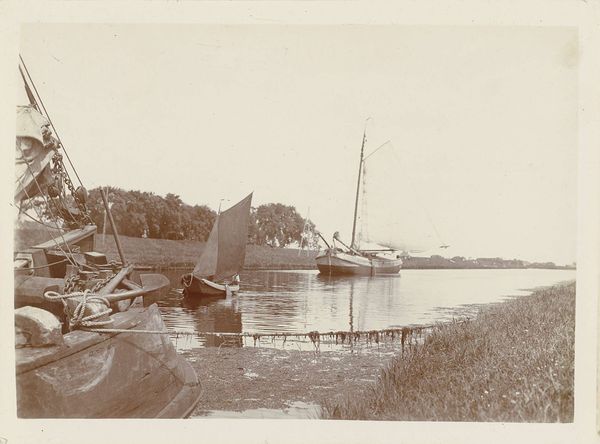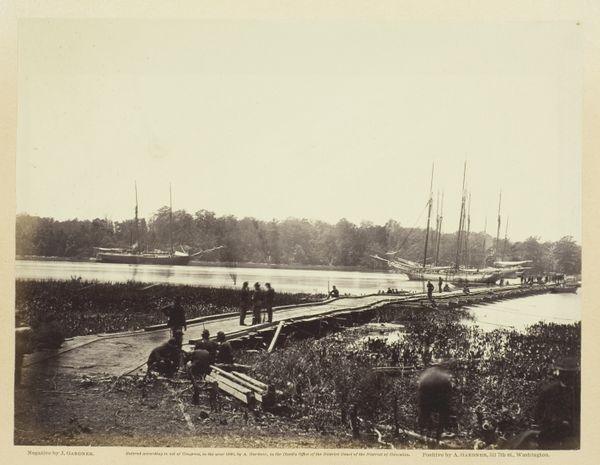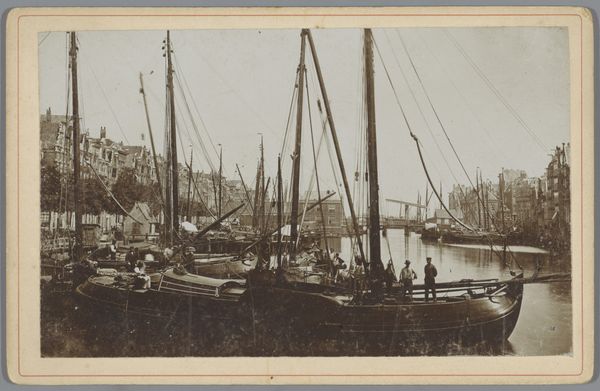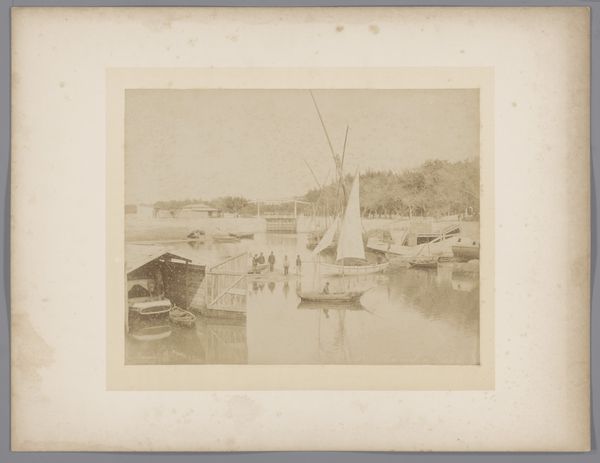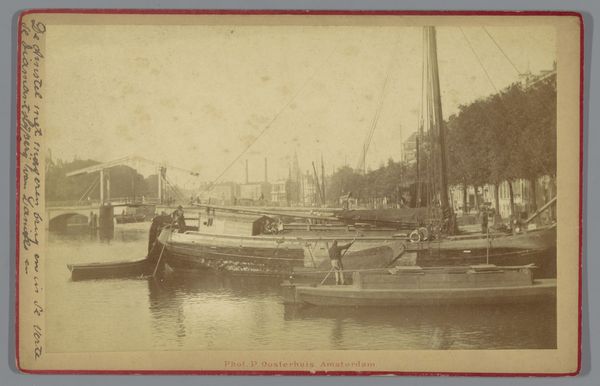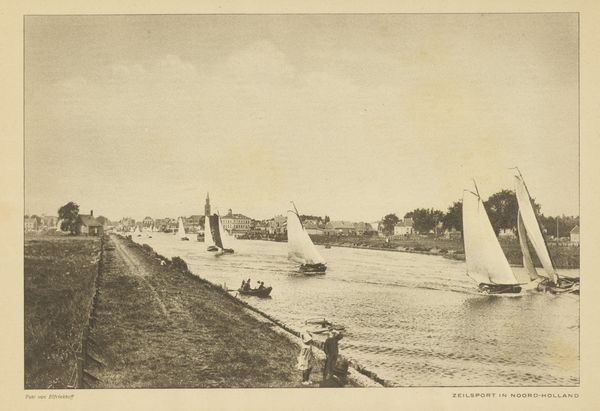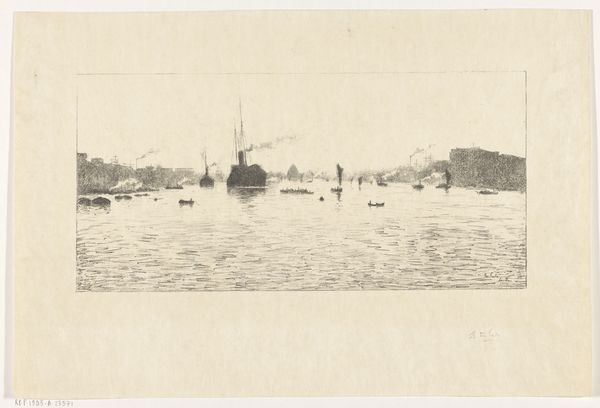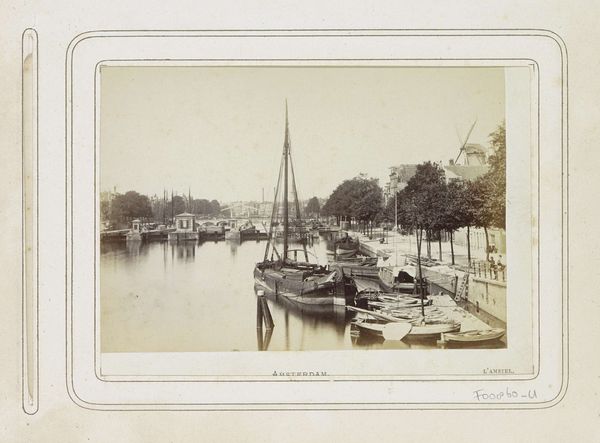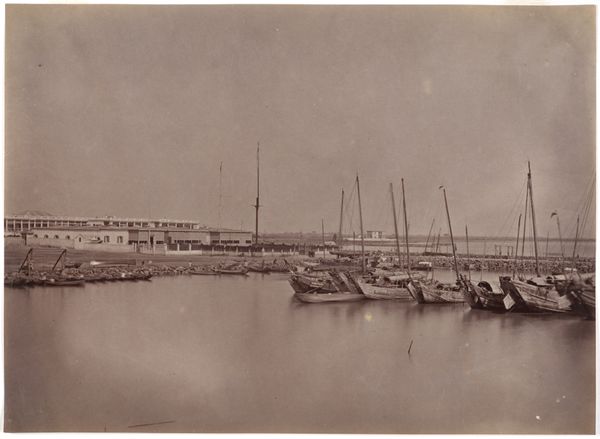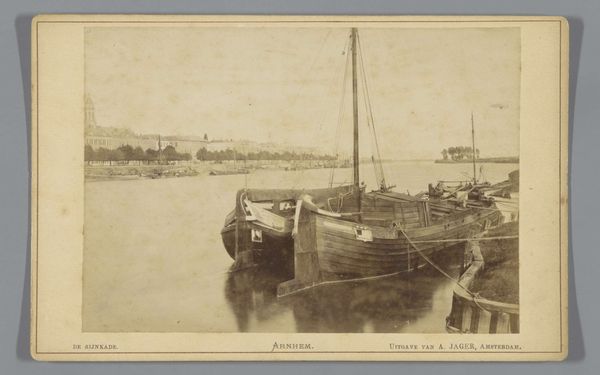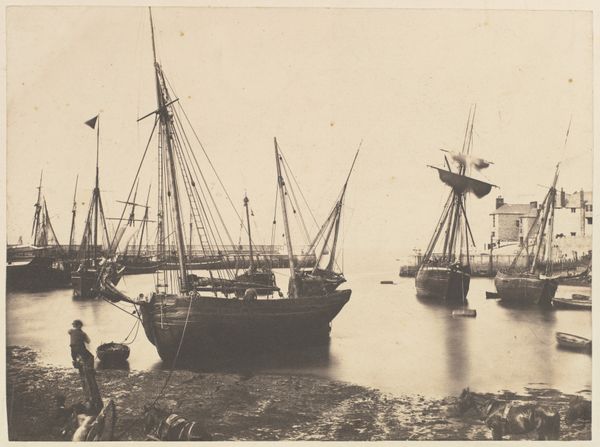![[Civil War View] by Thomas C. Roche](/_next/image?url=https%3A%2F%2Fd2w8kbdekdi1gv.cloudfront.net%2FeyJidWNrZXQiOiAiYXJ0ZXJhLWltYWdlcy1idWNrZXQiLCAia2V5IjogImFydHdvcmtzLzI5OTliZDZhLWI0MWUtNGFkZi1iOGJjLWQ5OGYzNGQ1MjZhZS8yOTk5YmQ2YS1iNDFlLTRhZGYtYjhiYy1kOThmMzRkNTI2YWVfZnVsbC5qcGciLCAiZWRpdHMiOiB7InJlc2l6ZSI6IHsid2lkdGgiOiAxOTIwLCAiaGVpZ2h0IjogMTkyMCwgImZpdCI6ICJpbnNpZGUifX19&w=3840&q=75)
Copyright: Public Domain
Curator: Looking at this fascinating albumen print from the 1860s entitled "[Civil War View]", the artist Thomas C. Roche captures a waterside scene in a way that I find quite evocative. Editor: Immediately, I'm struck by the feeling of somber stillness, even emptiness, conveyed by this photograph. The hazy light and the muted tones amplify the image’s introspective nature. What’s happening beyond the captured image, do you think? Curator: As a "view" rather than a clearly defined locale, this Civil War era albumen print speaks to me of the infrastructural impact. Consider the material constraints and available processes. Roche, utilizing readily available technologies of the time, creates a detailed record through the albumen process—glass plate negative, contact print on paper, treated with egg whites and silver nitrate. The print itself becomes evidence of that practice. Editor: That's a wonderful way to consider it, but consider the symbolic nature of the water and boats during wartime. Water often represents the flow of time and change, doesn't it? Here, with a war as its context, doesn’t it seem like the boats take on a heavy meaning? Vessels of transportation, yes, but possibly alluding to the movement of resources, of soldiers, perhaps even of hopes? Curator: The way you interpret that as directly referencing to the conflict is astute. But isn't it about more than simply content or allegorical weight? This photograph, this object, is the outcome of tangible industrial operations—the paper mill providing stock, the chemical suppliers furnishing nitrate—all are factors. Editor: Yet the placement of those ships, their quiet postures; don’t they evoke a sense of cultural pause amidst a period of tremendous upheaval? Even their very existence relies on readily available natural materials from felled trees... Curator: Right, everything returns to the natural materials needed to make the war machines *and* artistic documentations! But this process emphasizes that labor *creates* value. Here's a visual encoding of societal conditions expressed directly onto the material itself. Editor: Thank you, understanding that aspect adds more. Seeing these common, shared symbols through this lens of materiality, production, and war generates a compelling perspective on cultural memory. Curator: Yes, and it's through acknowledging this interdependency of factors that historical artifacts communicate the intricacy and magnitude of change over time!
Comments
No comments
Be the first to comment and join the conversation on the ultimate creative platform.

